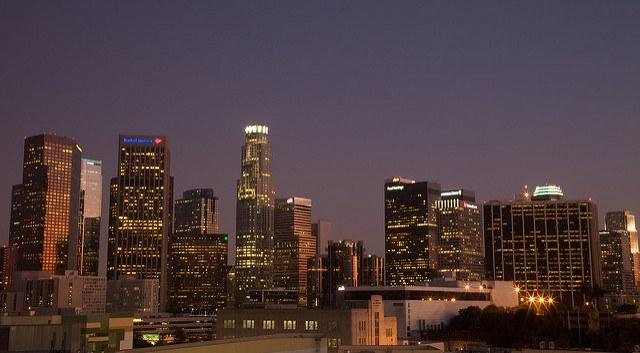
Representatives from around the world are meeting for climate talks in Marrakech, Morocco, this month. The Under2 Coalition announced new signatories at the talks last week. Under2 brings together states, regions and cities that are willing to commit to limiting greenhouse gas emissions to two 2 per capita, or 80 to 95 percent below 1990 levels by 2050.
The group now has 29 new signatories representing over a billion people, most of whom joined at a ceremony last week at the climate talks in Marrakech.
The new signatories include the Australian Capital Territory; the Indonesian provinces of South Sumatra, East Kalimantan and West Kalimantan; the Italian region of Abruzzo; and the Mexican states of Tabasco and Michoacán. Twenty-three city members of China’s Alliance of Peaking Pioneer Cities, including Beijing, also endorsed Under2.
“With the Paris Agreement entering into force last week, all levels of government in every part of the world need to come together and push forward solutions to secure a climate safe future,” Damian Ryan, acting CEO of the Climate Group, said in a statement last week.Under2 focuses its work on three areas:
- Supporting the signatories to develop short- and long-term goals and pathways toward deep decarbonization.
- Putting in place the policies that work through knowledge-sharing and cooperation between government signatories, endorsing nations and partners.
- Ensuring governments have the expertise and systems in place to assess their emissions accurately and track progress against their targets, by aligning them with the UNFCCC's Measurement, Reporting and Verification (MRV) system.
- Provides a model for other sub-national governments to join.
- Brings international attention to the actions and ambitious reduction goals of sub-national governments.
- Demonstrates the collective impact of the actions and commitments across states, regions, cities, and countries.
- Highlights the diversity of approaches to reducing emissions.
California shows how states and cities can lead the way in climate change action
Given that U.S. President-elect Donald Trump has repeatedly denied that climate change is occurring, it is a safe bet that he will likely undermine current President Barack Obama’s environmental initiatives. California, as one of the two original parties of the Under2, highlights how states and cities can lead the way in reducing emissions during the tenure of Donald Trump’s presidency.California is a leader when it comes to taking action on climate change. In 2006, during President George W. Bush’s administration, then Gov. Arnold Schwarzenegger signed the California Global Warming Solutions Act of 2006 (AB 32). The law requires California to reduce its GHG emissions to 1990 levels by 2020.
In 2015, California Gov. Jerry Brown issued an executive order that established a GHG emissions reduction target for 2030 of 40 percent below 1990 levels. The target is the most ambitious one in North America. To meet the 2030 target, Brown’s executive order specified certain policies, including increasing electricity from renewable energy sources to 50 percent, doubling energy efficiency in existing buildings, and reducing short-lived climate pollutants like methane and black carbon.
California also has an economy-wide cap-and-trade emissions trading system. It is the only trading system of its kind in the U.S. It is building a high speed rail system and is the world’s leading market for electric vehicles and stationary storage. And all that California is doing to tackle climate change is making a difference. Over the last five years, the state’s GDP has grown by five percent while its carbon emissions have decreased. California’s actions are creating jobs and saving its residents money. Solar companies in the state employ over 44,000 people. The state’s appliance and building efficiency policies have saved consumers over $65 billion and created 1.5 million jobs over four decades.
Image credit: Flickr/Kevin Stanchfield

Gina-Marie is a freelance writer and journalist armed with a degree in journalism, and a passion for social justice, including the environment and sustainability. She writes for various websites, and has made the 75+ Environmentalists to Follow list by Mashable.com.














